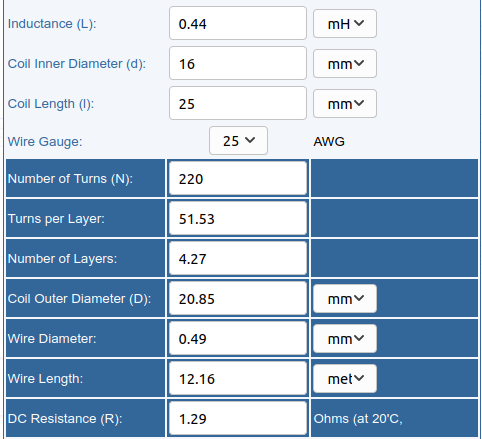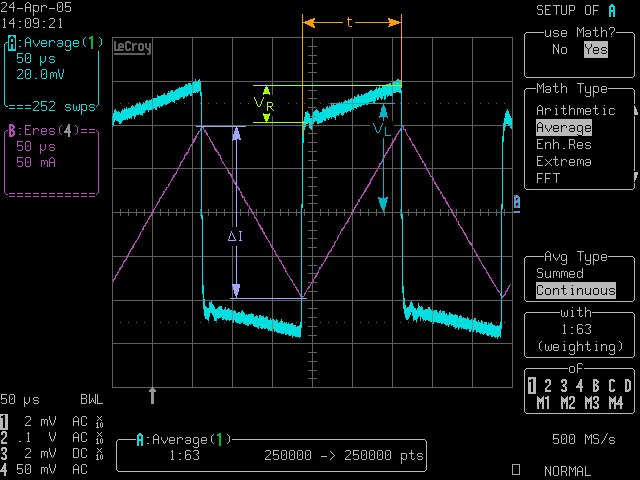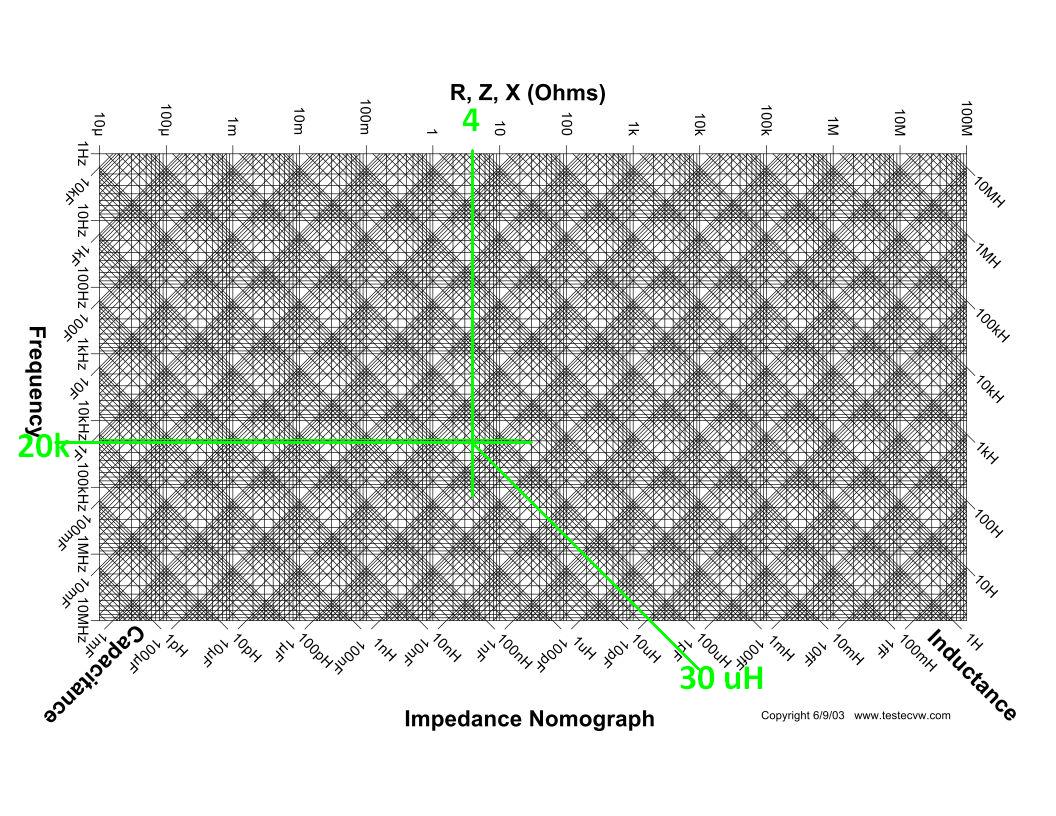Disclaimer: I'm computer scientist
I want to test a system described in an old (~1990) french patent and experiment with it if it works. The system requires to generate an "intense" varying magnetic field in the audio frequency range (<20kHz). The inventor used special signals, but I plan to use only a sin wave.
To produce the "intense" varying magnetic field, the inventor used a conventional 60W RMS audio amplifier and a simple 4 Ohms coil. The coil was described to be made of 300 turns of a 0.5mm wire, a height of 80mm and an internal diameter of 50mm. The inventor specified that he see 10Vefficient ("tension efficace") at the coil terminations. I'm not sure what it exactly means. Is it 14.1Vtt, 28.2 Vtt ? What power could that be ? Is it roughly 10*10/4 = 25W ?
A friend feared that the 0.5mm wire might be too thin and that the coil might heat up. Is this true ? I assumed that this should not be a problem if the inventor had no problem, but I'm not 100% sure that the system described by the inventor is valid.
I then made my own coil using 0.5mm wire. I used this service to determine the number of turns required to get a 4 Ohms coil with a height of 25mm and internal diameter of 16mm. This is what I got.
I then tried to measure the inductance and ESR with the method described here that uses a triangular signal. According to the method I should see this
I already tried this method with a small coil I made but with much less turns. I did indeed see the expected image. I noticed that I started to see an distortion (overdrive?) at a voltage around 2V if I remember well. Is this distortion due to the interaction of the coil with the generator or is it only a property of the coil ?
Now trying the method with my newly made coil of 220 turns, what I see is this
It doesn't match at all the expected look. It seem that the signal is shifted. I'm no electronic engineer, but I suspect that it could be due to a non-negligible capacitance. Also, above 4V the signal becomes distorted. I didn't try with the 160W amp yet. I don't want to break anything.
Do I see this because I made a compact coil instead of a big and stretched coil as did the inventor ?
This is what I see with a sinusoidal wave of 3kHz and 10Vtt
The sin wave is distorted and significantly attenuated.
These results are unexpected for me since coils of speakers are usually compact and not stretched. I assumed that the coil of the inventor is stretched because he puts big thing in the core. Could it be to reduce inductance ? I need only to put small liquid containers (Eppendorf) in the core.
Will I see such distortion too if I connect the coil as is to the audio amplifier ? Before testing this I prefer to ask the experts if what I do is OK.
What should/could I do to produce a powerful not distorted sinusoidal signal ?
Last question is how to determine the approximate output power of the audio amplifier if all I have is an oscilloscope. I don't have a good ampere meter.
Edit: I now remember that the support service of the oscilloscope told me that a coil connected to the output of the generator should have an impedance of 50 Ohms, otherwise the signal would be attenuated. What I see could thus be normal and result from the interaction with the generator.
Edit 2: I finally manage to measure the inductance using the method described here. The inductance measured with this method is 0.5 mH which is not that far from the 0.44 I was expecting. I need a good multimeter. I could then measure DC resistance of the coil to determine impedance. I'll need it also to measure current to determine the input power of the coil. Next tool to buy.
Edit 3: I tested the coil by connecting it to the audio amplifier output. I checked the voltage with the oscilloscope. The voltage is <200mV and every 5 to 10s I see an 8V short peak. The coil becomes hot. I checked that the amp is OK by connecting a speaker. It works witch also proves that the generator connected to the input line works as expected. It's just the coil which is bogus. Speaker coils have a magnet as core and when current flows through the coil a force is produced that I assume generates a resistance to the current flow. My coil doesn't have that. The inventor's coil doesn't have it too, so I assumed it was OK. The geometry of my coil and the coil of the inventor are different. Could this be the explanation ? It seam that my coil has a non negligible capacitance because of the compactness of the wiring. Is this the problem ?






